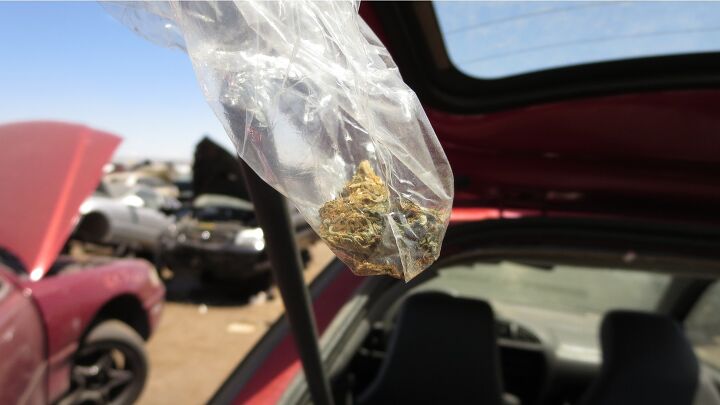Denver Police Know How To Catch Stoned Drivers, Feds Want To Learn More

The joke that spotting a high driver is as easy as looking for the car safely going 7 mph on the interstate isn’t entirely accurate, according to Denver police.
“You’d be wrong. We’ll see the same levels of intoxication between someone who’s been using alcohol and someone who is on drugs,” Denver police Captain Mark Chuck said Wednesday. “There’s virtually no difference.”
Spotting those signs of impairment could become very important as federal regulators devote resources to developing nationwide standards and training tools for law enforcement. The recently signed federal highway funding bill, dubbed Fixing America’s Surface Transportation (FAST) Act, directs the Transportation Department to study how to spot marijuana-impaired drivers as more states legalize the drug.
Denver police Officer Jim Gates said standardizing the signs for impaired driving — regardless of drug — may not be as complicated as determining a benchmark for THC potency in marijuana and at what level of THC in the bloodstream would constitute impairment.
“The biggest problem with marijuana … is there’s not a federal regulatory commission that regulates the THC levels,” Gates said. “It’s just like getting it off the street — you can buy one type of marijuana from one place and go buy it from another place the next day and not know if the THC levels are the same. When you take the same amount that you used yesterday, today, it may hit you harder — or it may not hit you at all, depending on what the THC levels are. And each company posts their own THC levels, but there’s no standard.”
In other words, without regulation, recreational marijuana would be analogous to Budweiser and Coors having wildly different levels of alcohol in their beers, without a standard of measurement between the two.
According to Gates, who is a trained drug recognition expert for the Denver police department, officers in Denver have seen an increase in the number of drugged drivers, but there hasn’t been a huge spike in arrests since 2013, when Colorado legalized marijuana for recreational use.
The National Highway Traffic Safety Administration already provides the training materials that Denver police use to identify drugged drivers, but the department shares what it’s learning about marijuana-impaired drivers to other groups across the country.
Among what officers have learned about marijuana-impaired drivers: no two drugged drivers are the same.
According to Chuck, whether or not a roadside “breathalyzer” for marijuana could be developed soon, many officers use other methods to determine impairment.
“Any tool would help officers, but in the totality of the circumstances in an arrest … there are more things going on,” he said.
Many times high drivers share similarities with drunk drivers: stumbling during the “walk and turn” and abnormal vitals, such as pulse or blood pressure.
The federal bill also directs the Transportation department to determine whether a standard of impairment could be developed for marijuana. In Colorado, legislators set the level at 5 nanograms of THC present in someone’s bloodstream — although that level passed with controversy.
Denver police said whatever level the feds may adopt, the same challenges as a standardized blood-alcohol content level exist for police: namely, different people react differently to marijuana and alcohol, regardless of amount.
“Your body will build up the same tolerances to marijuana as it will for alcohol. So you may not think you’re impaired when you actually are … we can see when you are. We have the same clues for both,” Chuck said.

More by Aaron Cole
Latest Car Reviews
Read moreLatest Product Reviews
Read moreRecent Comments
- Jkross22 Meant to ask.... what's the best oil to use in a popcorn popper? I've been wanting to try peanut oil, but can't find anything smaller than the huge container at smart n final.
- Ajla A union fight? How retro 😎
- Analoggrotto Finally, some real entertainment: the Communists versus the MAGAs. FIGHT!
- Kjhkjlhkjhkljh kljhjkhjklhkjh *IF* i was buying a kia.. (better than a dodge from personal experience) .. it would be this Google > xoavzFHyIQYShould lead to a 2025 Ioniq 5 N pre-REVIEW by Jason Cammisa
- Analoggrotto Does anyone seriously listen to this?


































Comments
Join the conversation
The day is rapidly approaching when it won't matter. When your car is capable of autonomous operation, stoned, drunk, or whatever, just flip on the autopilot and you're driving just like everyone else. Indeed, at that point you're essentially just a passenger and not breaking any law.
I suspect that Colorado police spot impaired drivers by looking for the critical signs, such as: -Phish stickers -ownership of a VW Bus -white dude with dreads -Bob Marley music -Interior littered with funyons